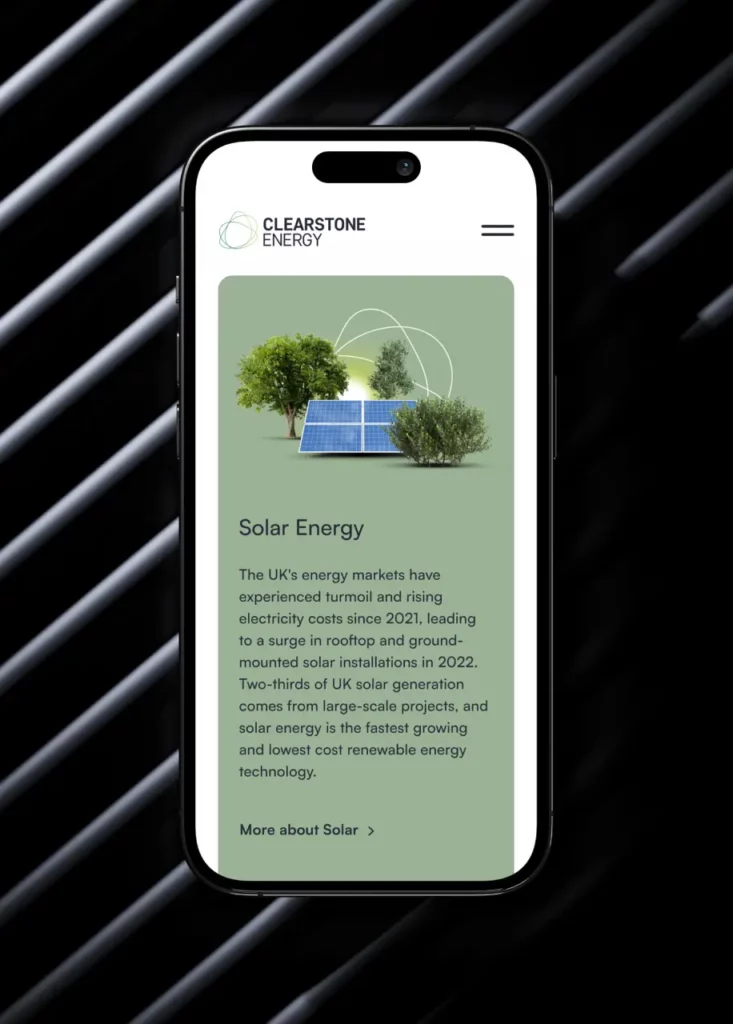WEB DESIGN STRATEGY INSIGHTS
Behind every high performing website is a strategic decision most people never see. At Ronins, we don’t treat web design as decoration, we treat it as a lever for growth. This hub is where we share the thinking behind the builds: the user research that changed a navigation flow, the content structure that doubled conversions, the design choice that landed a seven-figure client. These are the decisions that matter, and this is where we unpack them.
Whether you’re a founder fixing a leaky funnel or a CMO planning your next product launch, the goal is the same: clarity that converts. Our web design strategy insights are drawn from real work with scale ups, global brands, and challengers alike. No theory. No filler. Just sharp, commercial-first guidance on what it takes to design websites that perform, on the metrics that count.
STRATEGY
Setting a path to success on the web
Most websites fail not because they’re ugly, but because they’re unclear. No real structure. No prioritised goals. No sense of how users actually think, search or buy. We built this hub to change that.
These are the insights we wish every client had before briefing a site. Hard-won lessons from two decades in the room—solving the right problems, not just pushing pixels. Whether you’re relaunching or refining, start here. Because the site only works if the strategy does.

Accessibility
Insights for an inclusive online presence
Web accessibility isn’t a checkbox it’s a design standard. If your site excludes people, it’s already broken. Accessible websites aren’t just more inclusive, they perform better, rank higher, and serve more users with less friction.
We’ve pulled together the key insights on designing for all users, from structure to content to interaction. If you’re serious about building something usable, start here:

BRANDING
Insights and strategies to unlock the power of your brand
Branding isn’t your logo. It’s the gut feeling people get when they land on your site, or don’t. Whether you’re building from scratch or rethinking your identity, these insights cut through the fluff and focus on what actually drives perception and trust.
Explore the strategy behind standout brands—from positioning and naming to digital design systems that scale. No theory. Just real world thinking for founders, marketers, and creative leads who want their brand to land—and last.

OUR TARGET AUDIENCE
Who We Write For
Founders under pressure: You’ve got limited time and a big bet riding on your next site. We help you make smarter calls, faster, with insight that cuts through noise and focuses on outcomes.
CMOs chasing growth: You don’t need another fluffy design trend. You need commercial clarity: what to say, how to structure it, and how to convert interest into revenue.
Product owners & UX leads: You know the tech. What you need is a second brain, someone who’s been through the pain of leaky funnels, misaligned components, and stakeholder chaos.
Agencies and in-house teams: Sometimes you need outside perspective. Our insights help challenge assumptions, validate direction, or sharpen your strategic edge when the stakes are high.

OUR CONTENT STRATEGY
What We Cover
Web strategy, not decoration: We unpack the logic behind how high-performing sites are structured, from sitemap to scroll-depth, so you can build smarter, not prettier.
UX decisions that convert: Navigation, flows, microcopy, interactions, we share the thought process behind what works (and why) for real users in high-stakes environments.
Design systems that scale: Atomic design, component governance, and brand flexibility at speed. If you’re scaling fast, this is how to keep your site consistent without killing creativity.
Messaging and content strategy: How we craft journeys that speak to pain points, signal value, and move users through to action, without sounding like everyone else.
CRO + SEO integration: Strategy is in the overlaps. We share how to blend performance content with UX best practice and technical SEO that actually ranks.
Real world breakdowns: Not thought leadery waffle, actual examples from projects we’ve delivered for scale-ups, global brands, and ambitious challenger teams.

FAQs
What does “web design strategy” actually mean
What is web design strategy in simple terms?
Web design strategy is the intentional planning of your website’s design, structure, and functionality to align with business objectives. It’s about more than visuals, it’s how you use content, layout, and interactive elements to enhance user engagement and meet goals. A strong strategy involves understanding user needs, creating intuitive navigation, and optimising for mobile devices. It ensures your site doesn’t just look good, but performs, converts, and supports your wider digital strategy.
How does it support wider business objectives?
A well defined website strategy supports business goals by focusing on user behaviour and ensuring every interaction moves users closer to conversion. From content management to responsive design, each decision is shaped by a deep understanding of the user journey. For businesses in London, Surrey, and beyond, strategic design ensures your site works hard, capturing attention, guiding actions, and turning traffic into leads that support objectives across marketing and sales.
Why is user engagement so important online?
User engagement directly impacts conversions, retention, and search engine optimisation. Sites with poor engagement see high bounce rates and low customer feedback. Strategic planning ensures the use of interactive elements, accessible websites, and mobile responsiveness, all tailored to enhance user engagement. When users stay longer and take meaningful actions, it signals value to search engines and drives organic growth. A smart strategy keeps users engaged and focused on what matters to your brand.
What role does SEO play in design strategy?
Search engine optimisation isn’t separate from web design, it’s embedded in it. A strong strategy ensures technical setup, mobile friendly sites, and relevant keywords are baked into the foundation. The right structure, headings, and web content hierarchy help search engines index your pages effectively. Combined with a content management system that supports SEO best practices, your site becomes easier to find, and more useful to those who land on it.
How do user personas shape design strategy?
User personas give your UX strategy focus. They represent segments of your audience, shaped by real user behaviour and customer feedback. A persona-led strategy allows you to prioritise user needs, streamline content, and deliver intuitive navigation. Whether building for scale-ups, enterprise brands, or startups, this method ensures your web content and layout align with what matters most to your audience. Done right, personas guide every decision, from copy to colour.
What does mobile responsiveness really mean?
Mobile responsiveness means your site works seamlessly across mobile devices, adapting layout, content, and functionality without sacrificing user satisfaction. A responsive design strategy ensures that buttons are tappable, text is readable, and interactive elements behave properly. In fast-paced markets like London and Guildford, where users often browse on-the-go, a mobile-first experience is essential. It also improves website performance, boosts search engine optimisation, and contributes to greater user engagement.
How does feedback improve web strategy?
User feedback and customer feedback reveal friction points and hidden opportunities. When gathered consistently, this data helps you refine structure, streamline messaging, and improve user satisfaction. Incorporating user insights into your website strategy means you’re building with real problems in mind, not assumptions. Pair this with competitor analysis and user personas, and you’ll evolve a site that supports business goals, not just branding. Strategy isn’t set and forget, it’s shaped by real-world signals.
What makes navigation truly intuitive?
Intuitive navigation is built around user needs and tested behaviours. It means fewer clicks, clearer paths, and smarter labels that reflect how people actually think, not internal silos. Strategic navigation design considers content hierarchy, relevant content grouping, and mobile responsiveness. The result? A faster, smoother experience that enhances user engagement and improves your website performance. Search engines also benefit from cleaner structures, helping you rank more effectively across your core topics.
Why is performance part of design strategy?
Website performance isn’t just technical, it affects user experience and conversions. A strategic approach focuses on loading times, mobile optimisation, and content delivery across devices. Performance also impacts search engine optimisation, especially when search engines prioritise speed and mobile friendliness. Businesses in the UK and globally benefit from faster sites with stronger UX, because speed isn’t just convenience, it’s credibility. A fast, responsive site keeps users engaged and supports your business objectives.
Where should I start with strategy planning?
Start with your audience and business goals. Define user personas, collect user feedback, and assess your current website’s performance. Then layer in competitor analysis, content priorities, and your desired outcomes. Focus on creating a structure that supports intuitive navigation, accessible websites, and relevant content delivery. A content management system like WordPress can help manage updates. For guidance, explore our free resource library or connect with our strategy team for a discovery session.





